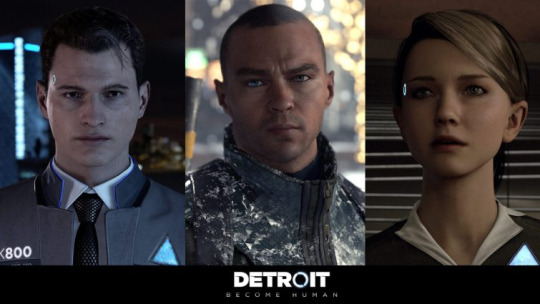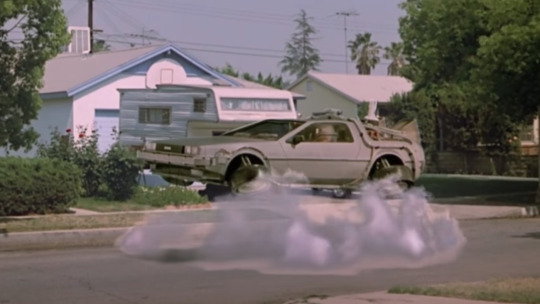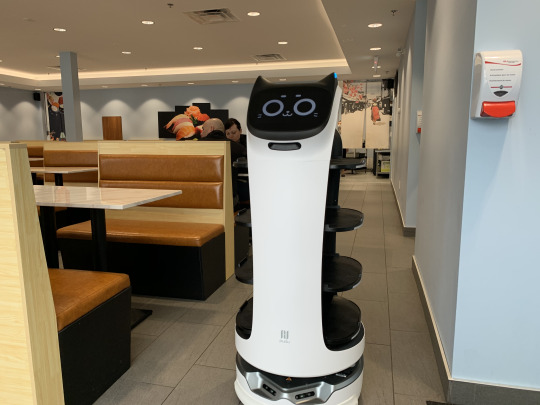#I want to consume these three books and immerse myself in this video essay of Much ado about nothing
Explore tagged Tumblr posts
Text
My ADHD is working so hard today to pull me into 7 different directions that not even my autism is enough to counteract it
#I want to consume these three books and immerse myself in this video essay of Much ado about nothing#and also rewatch a production of Hamlet#but I need to listen to the soundtrack of Good Omens and also understand the significance of Magritte's artwork#and how can I do that and read this comic book and this movie that Michael Sheen recommended#while also getting high on gender from all these photos of him in a wool three piece suit#that I can't emulate because it is TOO DAMNED HOT in Spain#also they're drilling the street outside my window and there's so much noise I had to lock everything up#and wear noise cancelling headphones#maybe I should just cancel the rest of the afternoon at go to sleep at 16:15#adhd
20 notes
·
View notes
Text
Do Robots Deserve Rights?
By: Hydra 🐍
I want to start this post by firmly stating: I AM NOT SCARED OF ROBOTS!! Except maybe that AI Robot named Sophia… I am just simply unsettled. Maybe it is because I enjoy immersing myself into a good science fiction book, movie, or video game? For example, my favourite solo player video game is Detroit Become Human. The game follows three different androids, all in which have different jobs but act as a type of servant for an owner. Throughout the game you are faced with prejudice, which ultimately leads you to have to choose between breaking the programming and becoming a deviant (gaining a consciousness of one’s own), or continuing to live as a slave to an other.

If roboticist Alan Winfield is correct with his statement: “Real robotics is a science born out of fiction,” (2011, 32) how are we to assume that robots gaining consciousness will not be a relevant topic in the near future? I mean we have a A LOT of fictional media existing around the idea of such topic (M3gan, Black Mirror, I Am Mother). In my opinion, scientist should be more focused on creating the flying cars from Back to the Future instead of frenzying over the next trendy artificial intelligence. Imagine never having to worry about sitting in rush hour traffic EVER AGAIN.

I realize the whole idea that “robots will take over the world one day” may seem comical to some, but If you really think about it, this notion is already in motion (hehehe that one made me feel like a white dad). The man of the moment himself, David J. Gunkel says, “Despite what is imaginatively foretold in fiction, the robot invasion is not coming from the future. The robots are already here. Like the “barbarians” that were said to have invaded Rome, we have already invited the robots into our places of work, into our homes, and into our lives. They are already all around us, even if we often do not see or identify them as such” (Gunkel 7).
I will assume you are human if you are reading this, and therefore I will also assume you have been inside a grocery store (considering you must consume food to survive). Well this being said, have you noticed the progression of self checkouts becoming more and more frequent? It’s so simple to go in and scan all your items, letting the machine do the brunt of the work for you. Or maybe you are a little more bougie and have experienced the cat robots of sushi places that act as a substitute for servers… IS THIS NOT AN EXAMPLE OF ROBOTS ALREADY BEING HERE AND RELEVANTLY USED?? That was a rhetorical question because OF COURSE IT IS. Even in the comfort of our own home we rely on robotic devices like Amazon’s ‘Alexa’ or Apple’s ‘Siri’ to turn on/off lights, answer questions, set alarms, etc.

So how did we get here? If we think about famous french philosopher Gilles Deleuze’s essay “Postscript on the Societies of Control,” Deleuze argues, “This technological evolution must be, even more profoundly, a mutation of capitalism […]” (Deleuze 4). This would make sense given the examples above, because these robotic machines tend to replace human jobs and duties. Robots don’t require a paycheck like people do. Therefore, the capitalist win once again. Human Kind: 0, Capitalism: 1,000,000,000.
Since it is evident we are living in a time that depends heavily on robots and technology for everyday use, I would like to bring up another question raised in Gunkel’s book: “Can and should robots have rights?” This question really perplexed me. At first, my obvious answer was ‘no.’ Robots are already taking away jobs from people who actually need to make money in order to survive. How can a machine need rights equal to those of humans? They do not have consciousness and souls (as far as I know)! That question’s ridiculous right? But then I think back to my favourite video game and how gut wrenching it felt having to play as an android with no rights or freedom of speech. I feel a little more tempted to say yes to Gunkel’s question after that, but I just don’t have it in me to place technology over living, breathing, flesh.

Should we be more empathetic and moralistic towards technological beings such as robots? Or is it more important to value our own human rights, especially considering that is a questionable topic in it’s own?
2 notes
·
View notes
Text
Title: Small Worlds: An examination of the role detailed set design plays in immersive stop-motion filmmaking.
I intend for this to be an extended essay.
Background
Stop motion set building follows general conventions of cinematography, but has specific technical limitations, and creative requirements, unique to the medium. Relevant to this report is, as Purves (2010) states, the fact that almost everything appearing on a stop motion set must be built from scratch. Every prop and background element is a physical object, and has been created with believability in mind, to preserve the audience’s immersion in the narrative, so that the miniature scale of the set is not made obvious.
Part of this concern with believability stems from the nature of the medium itself. While Purves (2010) acknowledges that “[matching] the proportions of real human architecture” (pp. 124) is not strictly necessary, he does emphasise the importance of illusion in filming stop-motion: the audience must not become conscious that they are watching puppets being moved frame-by-frame on a tiny stage, or they will lose investment in the story.
It is arguable, too, that in today’s ‘internet culture’, the consistency and credibility of an on-screen world is of increasing importance - in a commercial sense, if in no other. It is easier than ever for consumers to access and therefore rewatch films; to rewind and watch the same scene over and over; to pause a film at any time to view everything within the frame in high definition.
Shaw (2017) identifies the need for detail in close-up shots, but in a cultural context, taking care with detail is becoming more important in general, with the increasing prevalence of ‘geek culture’, and a growing attitude in audiences that views discrepancies - even aesthetic ones - as capable of ruining the immersion of a film. Leadbeater (2017) outlines the problems with this trend: “it is possible audiences will start thinking that finding continuity errors and minor flubs are comparable to analyzing the movie-making process”; as well as laying the blame at the feet of online content creators who are more concerned with profit and engagement than offering true criticism. However, no matter how damaging this attitude may be, it is still one that exists, and must at least be considered during pre-production, since the public who might hold such a view are also the audience any film will be marketed to.
More positively, it is also true that a focus on detail when (literally) building a world is often simply a labour of love. Purves (2007) likens the process of creating sets to the building of dollhouses - something that the fabricators will take joy and pride in. He cautions against adding details “that the camera is unlikely to see” (pp. 158), but it must follow from this that if a detail is both relevant and visible, it will not be unwelcome in a set. Moreover, as stated above, the ‘camera’ is becoming more and more likely to see detail - or rather, the audience is, with the aid of the pause button.
The handmade - or at least, specially constructed - nature of stop motion assets affords set designers and builders complete control over what appears on screen. The focus this report is concerned with is how that, in turn, can influence what goes into a set, and how small details and background elements can be crafted to contribute to a believable and immersive narrative, by creating a sense of a specific geological, historical and sociological setting.
Research question
“How can set design details contribute to an immersive sense of setting within narrative in stop-motion films?”
This report is intended to examine methods for world-building through set design - particularly by adding small details. Many directors have given anecdotal evidence about the difference a tiny part of a set can make in a story, and how this contributes to the film as a whole; however, I feel that this phenomenon has not been fully explored in relation to stop-motion, and the conventions unique to that medium.
The focus will be on set building for stop-motion, meaning exclusively sets which are constructed as physical models, and not those rendered through CGI.
Overall Aims
The overall aims of this report are:
To gain, and subsequently outline, a comprehensive understanding of the ways in which set design can be used to build a sense of story.
To investigate the ways in which individual details can contribute to this purpose.
To research practical methods and processes which can be used to achieve this outcome.
To examine individual approaches to world-building through set design, by analysing the design of certain films, and by gathering information from industry professionals.
Research Methodology
My working list of films to analyse comprises Laika’s Coraline and Kubo and the Two Strings, Astrid Goldsmith’s short film Quarantine, and Wes Anderson’s Isle of Dogs and Fantastic Mr. Fox. At present, I want to give myself room to drop titles that turn out not as suited to my research as they appear, should that occur.
Industry practitioners I intend to request interviews from are: Astrid Goldsmith, who lectured at the 2019 ANI WIP conference; John Lee, who gave a talk to the NUA animation course in 2017; and Thomas O’Meara, who was the supervisor when I did a work experience placement in February, working on sets.
I will have to ensure that I construct my interview questions carefully; perhaps beginning with a set of ‘baseline’ questions, kept the same for each correspondent, as a means of comparing their approaches. I could then tailor a few more questions to suit what I know about the practice of each individual.
In addition, in the event that all three decline to answer my questions, I plan to discuss the same topics with the staff on my course who I know have a background in stop motion; namely, Helen Piercy and Barry Leith. The ideal situation would be interviewing practitioners who I know have worked in-depth on set design, but both Purves and Shaw talk in the context of creating films with very small crews - or even no crew at all - highlighting the fact that in stop-motion, it is not uncommon for practitioners to be versed in multiple parts of the process, even if they only specialise in one.
Suggested chapters
The role of detailed set design in story.
Practical techniques for detail.
Case studies: Individual application of techniques.
Potential outcomes
I hope to specialise in stop-motion upon graduating, ideally fabrication of some kind, but the NUA course has not yet covered set building in any way. As such, I hope to gain a better understanding of the discipline through this work, that can be applied to projects in my future.
As previously mentioned, a lot of information on detail in set building exists in quite anecdotal forms; my research report should collate these scattered pieces in a more formal, comprehensive way, for use by other budding set designers.
I also hope that this will be of aid, not just to set designers in a practical manner, but to stop-motion practitioners as a whole; this research may inform, in some small way, how readers approach overall production design and story.
Bibliography
Articles
Leadbeater, A. (2017, August 16th). Is CinemaSins Bad For Film Criticism? ScreenRant [online]. Retrieved from: https://screenrant.com/cinema-sins-problems-film-criticism-director-backlash/2/
Marsh, C. (2013, April 5). Nitpicking Isn’t Criticism: ‘Jurassic Park’ and Why ‘Flaws’ Don’t Matter. MTV News [online]. Retrieved from: http://www.mtv.com/news/2770454/jurassic-park-flaws/
Spiegel, J. (2017, August 15th). ‘Kong: Skull Island’ Director Pinpoints the Problem With CinemaSins. The Hollywood Reporter [online]. Retrieved from: https://www.hollywoodreporter.com/heat-vision/kong-skull-island-director-pinpoints-problem-cinemasins-1029915
Books
Hernandez, E. (2013) Set the Action! Creating Backgrounds for Compelling Storytelling in Animation, Comics, and Games. Focal Press.
Purves, B. (2007) Stop Motion: Passion, Process and Performance. Oxford : Focal Press.
Purves, B. (2010) Basics Animation: Stop Motion. Lausanne : AVA Academia.
Shaw, S. (2004) Stop Motion: Craft Skills for Model Animation. Oxford, UK; Burlington, MA : Focal Press.
Van Sijll, J. (2005) Cinematic Storytelling: The 100 most powerful film conventions every filmmaker must know. Studio City, Calif.; Oxford : Michael Wiese; Elsevier Science [distributor]
Yin, W. (2011) Impeccable Scene Design for Game, Animation and Film (Scenic design course by Weiye Yin). London : CYPI
Video
Adobe Creative Cloud (2016) The Secret World of Annie Atkins, Graphic Designer for Films [YouTube video]. Available at: https://www.youtube.com/watch?v=flMespYYwTw&list=PLyyhLKumvP95NUzIurgktsaEf3BSpNUvI&index=8 [Accessed 18 April 2019]
Architectural Digest (2018) 'The Crown' Sets Explained by the Show's Set Designer | Notes on a Set [YouTube video]. Available at: https://www.youtube.com/watch?v=OiIxePlKZ1A&list=PLyyhLKumvP95NUzIurgktsaEf3BSpNUvI&index=7 [Accessed 18 April 2019]
BAFTA Guru (2015) What Does A Production Designer Do? [YouTube video]. Available at: https://www.youtube.com/watch?v=xnV0GNtHlyU&list=PLyyhLKumvP95NUzIurgktsaEf3BSpNUvI&index=5 [Accessed 18 April 2019]
CineFix (2017) 10 Best Uses of Color of All Time [YouTube video]. Available at: https://www.youtube.com/watch?v=tILIeNjbH1E&list=PLyyhLKumvP95NUzIurgktsaEf3BSpNUvI&index=10&t=0s [Accessed 18 April 2019]
CrashCourse (2017) Designing the World of Film: Crash Course Film Production #9 [YouTube video]. Available at: https://www.youtube.com/watch?v=Q3BcS8Uwl9U&list=PLyyhLKumvP95NUzIurgktsaEf3BSpNUvI&index=2 [Accessed 18 April 2019]
Dave Williams (2016) Principles of set design lecture video [YouTube video]. Available at: https://www.youtube.com/watch?v=9JBlXCSIzQY&list=PLyyhLKumvP95NUzIurgktsaEf3BSpNUvI&index=10 [Accessed 18 April 2019]
Lindsay Ellis (2018) That Time Disney Remade Beauty And The Beast [YouTube video]. Available at: https://www.youtube.com/watch?v=vpUx9DnQUkA&t=1314s [Accessed 2 May 2019]
Short of the Week (2013) The Importance of Production Design | Short of the Week Show | PBS Digital [YouTube video]. Available at: https://www.youtube.com/watch?v=pS47EXccx3I&list=PLyyhLKumvP95NUzIurgktsaEf3BSpNUvI&index=6 [Accessed 18 April 2019]
StudioBinder (2018) Production Design — Filmmaking Techniques for Directors: Ep2 [YouTube video]. Available at: https://www.youtube.com/watch?v=wNXNEs2eBkg&list=PLyyhLKumvP95NUzIurgktsaEf3BSpNUvI&index=2&t=0s [Accessed 18 April 2019]
Website
Jason Ingolfsland (2018) Nitpicking and Film Criticism [online]. (Last updated 21 April 2018). Available at: https://screenrant.com/cinema-sins-problems-film-criticism-director-backlash/2 [Accessed 2 May 2019]
0 notes